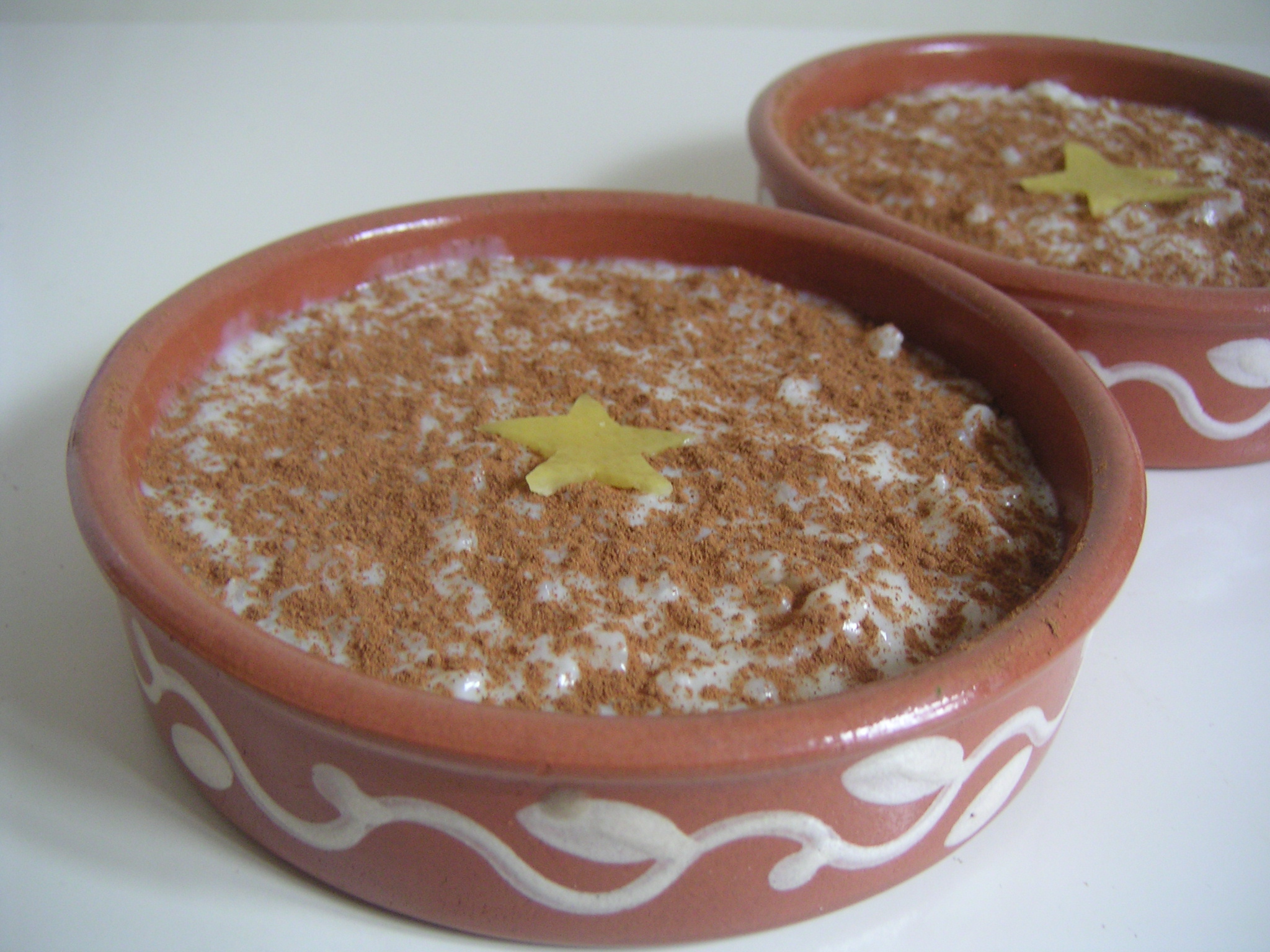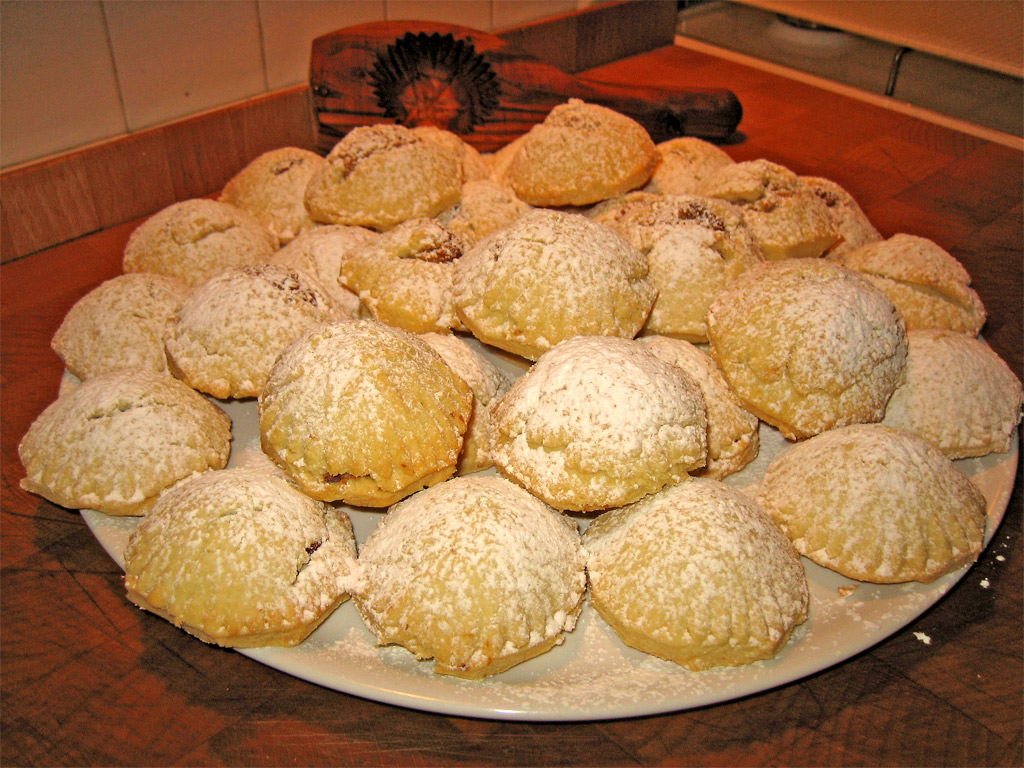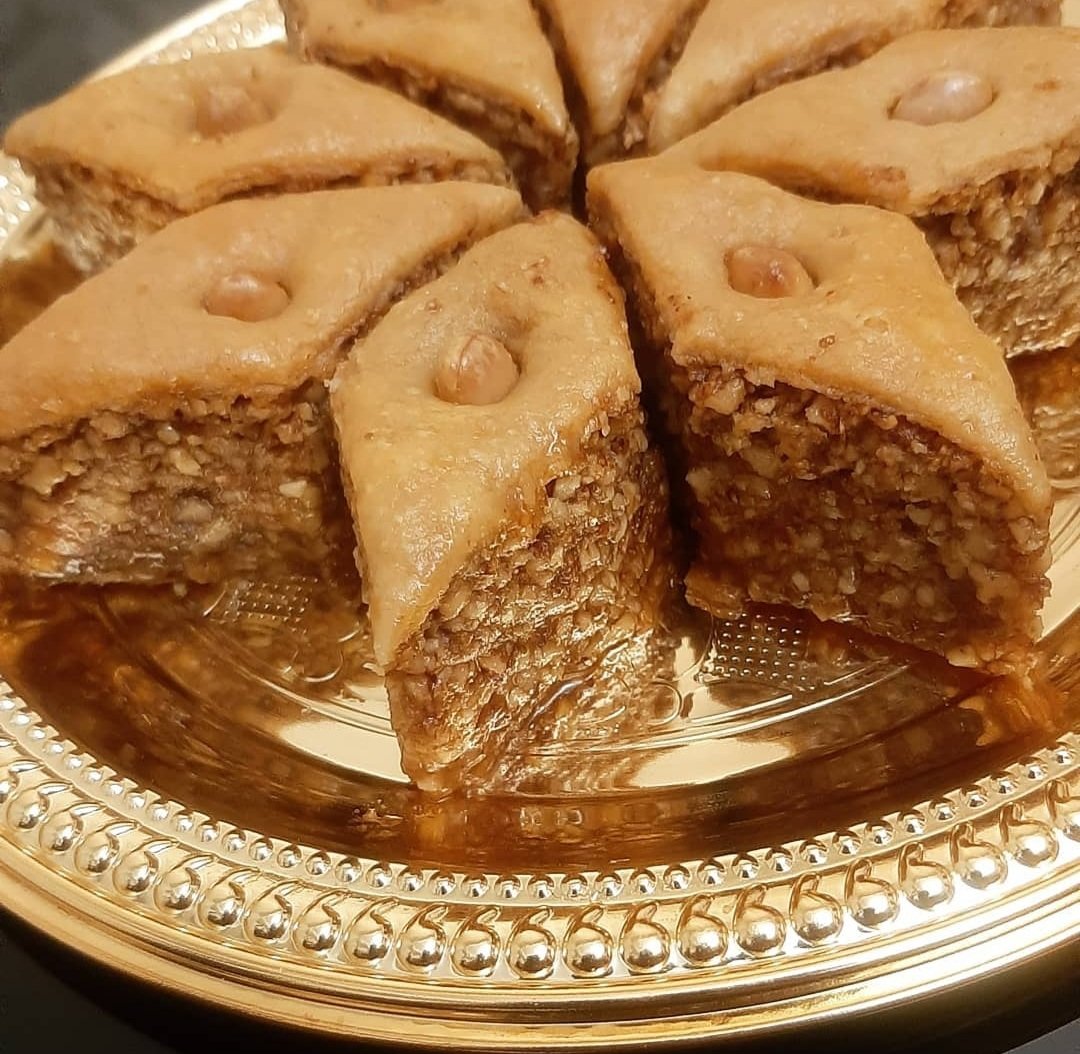|
Lebanese Cuisine
Lebanese cuisine is the culinary traditions and practices originating from Lebanon. It includes an abundance of Whole grain#Varieties, whole grains, Fruit#Food uses, fruits, Vegetable#Cultivation, vegetables, fresh Fish (food), fish and seafood. Poultry#Poultry as food, Poultry is eaten more often than red meat, and when red meat is eaten, it is usually Lamb and mutton#Butchery and cookery, lamb and Goat#Meat, goat meat. Dishes include copious amounts of garlic and olive oil, and dishes are often seasoned with salt and lemon juice. Chickpeas and parsley are also staples of the Lebanese diet. Well-known dishes include ''Baba ghanoush, baba ghanouj'', ''tabbouleh'', ''sfeeha'', ''falafel'' and ''shawarma''. An important component of many Lebanese meals is ''hummus'', a chickpea puree dish, and many dishes are eaten with flatbread. A plate of veggies with tomatoes, cucumber, mint, olives and pickles is always served on table, and a plate of fruits at the end of the meal with a Leba ... [...More Info...] [...Related Items...] OR: [Wikipedia] [Google] [Baidu] |
Lebanon
Lebanon, officially the Republic of Lebanon, is a country in the Levant region of West Asia. Situated at the crossroads of the Mediterranean Basin and the Arabian Peninsula, it is bordered by Syria to the north and east, Israel to the south, and the Mediterranean Sea to the west; Cyprus lies a short distance from the coastline. Lebanon has a population of more than five million and an area of . Beirut is the country's capital and largest city. Human habitation in Lebanon dates to 5000 BC. From 3200 to 539 BC, it was part of Phoenicia, a maritime civilization that spanned the Mediterranean Basin. In 64 BC, the region became part of the Roman Empire and the subsequent Byzantine Empire. After the seventh century, it Muslim conquest of the Levant, came under the rule of different Islamic caliphates, including the Rashidun Caliphate, Rashidun, Umayyad Caliphate, Umayyad and Abbasid Caliphate, Abbasid. The 11th century saw the establishment of Christian Crusader states, which fell ... [...More Info...] [...Related Items...] OR: [Wikipedia] [Google] [Baidu] |
Falafel
Falafel (; , ) is a deep-fried ball or patty-shaped fritter of Egyptian origin that features in Middle Eastern cuisine, particularly Levantine cuisines. It is made from ground fava beans, chickpeas, or both, and mixed with herbs and spices before frying. Falafel is often served in a flatbread such as pita, samoon, laffa, or taboon; “falafel” also frequently refers to a wrapped sandwich that is prepared in this way. The falafel balls may be topped with salads, pickled vegetables, and hot sauce, and drizzled with tahini-based sauces. Falafel balls may also be eaten alone as a snack or served as part of a meze tray. Falafel is a popular street food eaten throughout the Middle East. In Egypt, it is most often made with fava beans, while in Israel, Palestine, Jordan, Lebanon, and Syria, it is typically made with chickpeas or sometimes a blend of both. Etymology The word () is Arabic and is the plural of ' () 'pepper', borrowed from Persian (), cognate with t ... [...More Info...] [...Related Items...] OR: [Wikipedia] [Google] [Baidu] |
Arak (distilled Beverage)
Arak or araq (Arabic: عرق, is a distilled Levantine distilled spirit, spirit of the anise drinks family. Composition Arak is traditionally made of grapes and aniseed (the seeds of the anise plant); when crushed, their oil provides arak with a slight licorice taste. Date (fruit), Dates, figs, and other fruits are sometimes added.Rob DeSalle & Ian Tattersall, ''Distilled: A Natural History of Spirits'' (Yale University Press: 2022, pp. 264-65. Typically, arak is a minimum of 50% alcohol by volume (ABV), and can be up to 70% ABV (140 Alcohol proof, proof). A 53% ABV is considered typical.Zoe SottileIt's one of the world's oldest spirits. Now it's making a comeback CNN (June 27, 2023).Neil MacFarquhar ''New York Times'' (January 19, 2005). Etymology The word ''arak'' comes from Arabic language, Arabic ' (, meaning 'perspiration'). Its pronunciation varies depending on the regional varieties of Arabic, e.g.: or . Production and consumption Arak is a traditional alcoholic b ... [...More Info...] [...Related Items...] OR: [Wikipedia] [Google] [Baidu] |
Cinnamon
Cinnamon is a spice obtained from the inner bark of several tree species from the genus ''Cinnamomum''. Cinnamon is used mainly as an aromatic condiment and flavouring additive in a wide variety of cuisines, sweet and savoury dishes, biscuits, breakfast cereals, Snack, snack foods, bagels, teas, hot chocolate and traditional foods. The aroma and flavour of cinnamon derive from its essential oil and principal component, cinnamaldehyde, as well as numerous other constituents, including eugenol. Cinnamon is the name for several species of trees and the commercial spice products that some of them produce. All are members of the genus ''Cinnamomum'' in the family Lauraceae. Only a few ''Cinnamomum'' species are grown commercially for spice. ''Cinnamomum verum'' (alternatively ''C. zeylanicum''), known as "Ceylon cinnamon" after its origins in Sri Lanka (formerly Ceylon), is considered to be "true cinnamon", but most cinnamon in international commerce is derived from four other speci ... [...More Info...] [...Related Items...] OR: [Wikipedia] [Google] [Baidu] |
Caraway
Caraway, also known as meridian fennel and Persian cumin (''Carum carvi''), is a biennial plant in the family Apiaceae, native to western Asia, Europe, and North Africa. Etymology The etymology of "caraway" is unclear. Caraway has been called by many names in different regions, with names deriving from the Latin ( cumin), the Greek ''karon'' (again, cumin), which was adapted into Latin as (now meaning caraway), and the Sanskrit ''karavi'', sometimes translated as "caraway", but other times understood to mean "fennel".Katzer's Spice PagesCaraway Caraway (''Carum carvi'' L.)/ref> English use of the term caraway dates to at least 1440, possibly having Arabic origin.Walter William Skeat, Principles of English Etymology, Volume 2, page 319. 189Words of Arabic Origin/ref> Description The plant is similar in appearance to other members of the carrot family, with finely divided, feathery leaves with thread-like divisions, growing on stems. The main flower stem is tall, wit ... [...More Info...] [...Related Items...] OR: [Wikipedia] [Google] [Baidu] |
Anise
Anise (; '), also called aniseed or rarely anix, is a flowering plant in the family Apiaceae native to the eastern Mediterranean region and Southwest Asia. The flavor and aroma of its seeds have similarities with some other spices and herbs, such as star anise, fennel, liquorice, and tarragon. It is widely cultivated and used to flavor food, candy, and alcoholic drinks, especially around the Mediterranean. Etymology The name "anise" is derived via Old French from the Latin words or from Greek ''ánēthon'' referring to dill. An obsolete English word for anise is ''anet'', also coming from ''anīsum''. Botany Anise is an herbaceous annual plant growing to or more. The leaves at the base of the plant are simple, long and shallowly lobed, while leaves higher on the stems are feathery or lacy, pinnate, divided into numerous small leaflets. Both leaves and flowers are produced in large, loose clusters. The flowers are either white or yellow, approximately in diameter ... [...More Info...] [...Related Items...] OR: [Wikipedia] [Google] [Baidu] |
Rice Pudding
Rice pudding is a dish made from rice mixed with water or milk and commonly other ingredients such as sweeteners, spices, flavourings and sometimes eggs. Variants are used for either desserts or dinners. When used as a dessert, it is commonly combined with a sweetener such as sugar. Such desserts are found on many continents, especially Asia, where rice is a staple. Some variants are thickened only with the rice starch, while others include eggs, making them a kind of custard. Rice pudding around the world Rice puddings are found in nearly every area of the world. Recipes can greatly vary even within a single country. The dessert can be boiled or baked. Different types of pudding vary depending on preparation methods and the selected ingredients. The following ingredients are usually found in rice puddings: * rice; white rice (usually short-grain, but can also be long-grain, broken rice, basmati, or jasmine rice), brown rice, or black rice * milk (whole milk, plant milk, cream ... [...More Info...] [...Related Items...] OR: [Wikipedia] [Google] [Baidu] |
Meghli
Meghli, moghli, meghleh, (), or karawiyah, is a Levantine dessert based on a floured rice pudding and spiced with anise, caraway, and cinnamon. The dish is often garnished with dried coconut flakes and various nuts including almonds, walnuts, pine nuts, and pistachios. Meghli is commonly served to celebrate the birth of a child. It is also a popular Christmas dessert in Lebanon as a celebration of the birth of Jesus. Name The name 'meghli' means “boiled” in Arabic, referring to the long time (up to an hour) it must be continuously stirred while boiling.Anissa Helou, Lebanese Cuisine: More Than 250 Authentic Recipes From The Most Elegant Middle Eastern Cuisine, St. Martin's Griffin (June 15, 1998), pg 241 Celebrations The dish was traditionally served to celebrate the birth of a male heir, but has now become a dessert to celebrate any newborn. The caraway is thought to assist the new mother in lactating Meghli is a popular Christmas dessert in Lebanon and among Christians ... [...More Info...] [...Related Items...] OR: [Wikipedia] [Google] [Baidu] |
Ka'ak
Ka'ak (; also transliterated kaak) or kahqa is the common Arabic word for cake or biscuit, in its various senses, and can refer to several different types of baked goods produced throughout the Arab world and the Near East. The bread, in Middle Eastern countries, is similar to a dry and hardened biscuit and mostly ring-shaped. A similar pastry called "''kue kaak''" is also popular in Indonesia. History Ka'ak is first attested to in the Kitab al Wusla il al Habib, which originates from Syria in the 13th century. The Kitab al Wusla il al Habib gives three recipes for Ka'ak. Variations Bread rings Ka'ak can refer to a bread commonly consumed throughout the Levant that is made in a large ring-shape and is covered with sesame seeds. Fermented chickpeas are used as a leavening agent. Widely sold by street vendors, it is usually eaten as a snack or for breakfast with za'atar. In East Jerusalem , Palestinian Jerusalem, it is sometimes served alongside oven-baked eggs and falafel. Pale ... [...More Info...] [...Related Items...] OR: [Wikipedia] [Google] [Baidu] |
Sfouf
Sfouf () is a Lebanese almond-semolina cake consumed on birthdays, family reunions, and religious holidays. It is made from semolina flour flavored with turmeric, sugar, sesame paste, aniseed, and pine nuts, and raised with baking powder Baking powder is a dry chemical leavening agent, a mixture of a carbonate or bicarbonate and a weak acid. The base and acid are prevented from reacting prematurely by the inclusion of a buffer such as cornstarch. Baking powder is used to increas .... References {{Arab-cuisine-stub Arab cuisine Lebanese cuisine Cakes ... [...More Info...] [...Related Items...] OR: [Wikipedia] [Google] [Baidu] |
Baklava
Baklava (, or ; ) is a layered pastry dessert made of filo pastry, filled with chopped nuts, and sweetened with syrup or honey. It was one of the most popular sweet pastries of Ottoman cuisine. There are several theories for the origin of the pre-Ottoman version of the dish. In modern times, it is a common dessert among cuisines of countries in West Asia, Southeast Europe, Central Asia, and North Africa. It is also enjoyed in Pakistan and Afghanistan, where, although not a traditional sweet, it has carved out a niche in urban centers. Etymology The word ''baklava'' is first attested in English in 1650, a borrowing from . The name ''baklava'' is used in many languages with minor phonetic and spelling variations. The earliest known reference to baklava is in a poem by the 15th century mystic Kaygusuz Abdal. The historian Paul D. Buell argues that the word ''baklava'' may come from the Mongolian root ' 'to tie, wrap up, pile up' composed with the Turkic verbal ending ''-v'' ... [...More Info...] [...Related Items...] OR: [Wikipedia] [Google] [Baidu] |
Flatbread
A flatbread is bread made usually with flour; water, milk, yogurt, or other liquid; and salt, and then thoroughly rolled into flattened dough. Many flatbreads are Unleavened bread, unleavened, although some are leavened, such as pita bread. A Serving size, serving of 85g (~3 ounces) of pita bread has 234 Calorie, calories. Flatbreads range from below one millimeter to a few centimeters thick so that they can be easily eaten without being sliced. They can be baked in an oven, fried in hot oil, grilled over hot coals, cooked on a hot pan, tava, Comal (cookware), comal, or metal griddle, and eaten fresh or packaged and frozen for later use. History Flatbreads were amongst the earliest food processing, processed foods, and evidence of their production has been found at ancient sites in Mesopotamia, ancient Egypt, and the Indus Valley Civilisation, Indus civilization. The origin of all flatbread baking systems are said to be from the Fertile Crescent in West Asia, where they would su ... [...More Info...] [...Related Items...] OR: [Wikipedia] [Google] [Baidu] |







